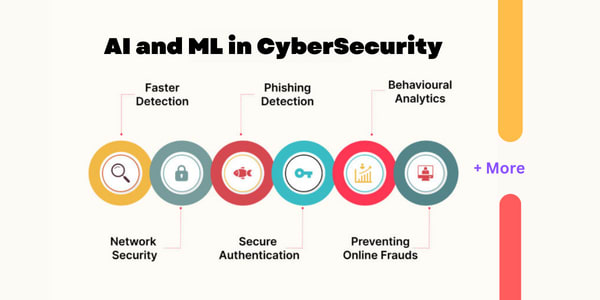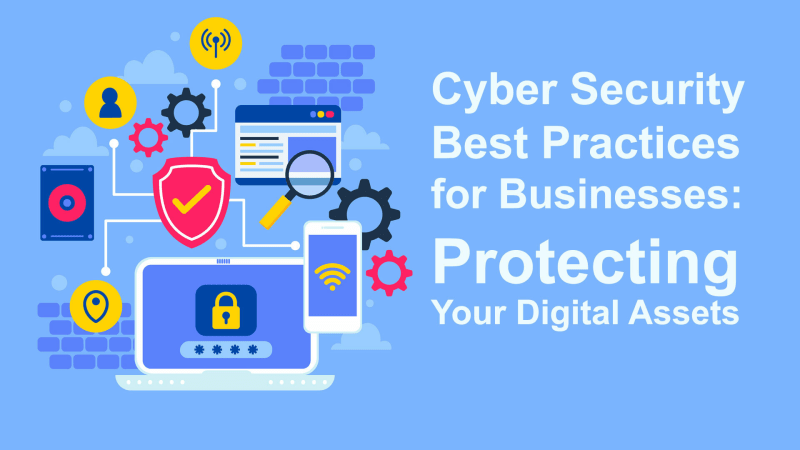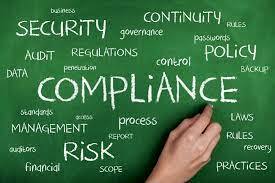Introduction:
In today's hyperconnected world, cybersecurity has become a paramount concern for individuals, businesses, and governments alike. As technology continues to advance, so do the methods and techniques used by cybercriminals. To stay ahead in the ongoing battle against cyber threats, it's essential to be aware of the latest trends, emerging threats, and security strategies. In this comprehensive blog, we'll delve into the dynamic landscape of cybersecurity in 2023, exploring the most current trends, evolving threats, and effective security measures.
Table of Contents:
The Evolving Cyber Threat Landscape
-1.1. Cybercriminal Sophistication
-1.2. Ransomware on the Rise
-1.3. Supply Chain Attacks
-1.4. IoT Vulnerabilities
-1.5. Cloud Security Challenges
Emerging Cybersecurity Trends
-2.1. Zero Trust Security
-2.2. AI and Machine Learning in Cybersecurity
-2.3. Quantum-Safe Cryptography
-2.4. Threat Intelligence Sharing
-2.5. Privacy-Centric Technologies
Securing Your Digital Assets
-3.1. Strong Passwords and Multi-Factor Authentication (MFA)
-3.2. Regular Software Updates and Patch Management
-3.3. Employee Training and Awareness
-3.4. Network Segmentation
-3.5. Incident Response Plans
The Role of Government and Regulations
-4.1. Cybersecurity Legislation
-4.2. International Cooperation
-4.3. Regulatory Compliance
The Future of Cybersecurity
-5.1. Quantum Computing and Security
-5.2. Cybersecurity Workforce Shortage
-5.3. Enhanced User Authentication
Staying Ahead in the Cybersecurity Game
-6.1. Adopt a Zero Trust Security Model
-6.2. Leverage AI and Machine Learning
-6.3. Stay Informed About Quantum-Safe Cryptography
-6.4. Promote a Security-Aware Culture
-6.5. Regularly Update and Patch Systems
-6.6. Implement Multi-Factor Authentication
-6.7. Plan and Practice Incident Response
-6.8. Stay Compliant with Regulations
-6.9. Collaborate and Share Threat Intelligence
-6.10. Invest in Emerging Technologies
-6.11. Prepare for the Future
The Human Element
- 7.1. Social Engineering Threats
- 7.2. Cyber Hygiene
- 7.3. User-Friendly Security Measures
- 7.4. Cultivating a Security Culture
- 7.5. Tailored Training
The Ethical Implications of Cybersecurity
- 8.1. Privacy Concerns
- 8.2. Use of AI and Machine Learning
- 8.3. Cyber Warfare and State-Sponsored Attacks
- 8.4. Security Research and Disclosure
Cybersecurity for Small and Medium-sized Enterprises (SMEs)
- 9.1. Outsourced Security Services
- 9.2. Education and Training
- 9.3. Security as a Priority
Collaboration and Information Sharing
- 10.1. Public-Private Partnerships
- 10.2 Community and Open-Source Initiatives
- 10.3. Threat Intelligence Sharing
1. The Evolving Cyber Threat Landscape
1.1. Cybercriminal Sophistication
Cybercriminals are continually improving their tactics and tools. They are now capable of conducting highly sophisticated attacks that can bypass traditional security measures. From social engineering to advanced malware, cybercriminals are using a wide array of techniques to infiltrate systems and steal sensitive data.
1.2. Ransomware on the Rise
Ransomware attacks have been on the rise, targeting organizations of all sizes. Attackers encrypt critical data and demand a ransom for its release. Victims are left with the difficult decision of paying the ransom or facing potentially catastrophic data loss.
1.3. Supply Chain Attacks
Supply chain attacks have become a significant concern. Cybercriminals target the weakest link in the supply chain to infiltrate larger organizations. This tactic has been used to compromise software updates and hardware components, leading to widespread breaches.
1.4. IoT Vulnerabilities
The increasing proliferation of Internet of Things (IoT) devices has expanded the attack surface. Many IoT devices lack proper security features, making them vulnerable to exploitation. Attackers can use compromised IoT devices as entry points to larger networks.
1.5. Cloud Security Challenges
As businesses move their operations to the cloud, cloud security has become a critical focus. Misconfigured cloud settings and inadequate access controls can lead to data exposure. Securing cloud environments is a top priority for organizations.
2. Emerging Cybersecurity Trends
2.1. Zero Trust Security
Zero Trust Security has gained momentum as a proactive approach to cybersecurity. It assumes that threats exist both inside and outside the network. Organizations must verify every user, device, and application attempting to connect to their network, regardless of location.

2.2. AI and Machine Learning in Cybersecurity
AI and machine learning are being used to enhance cybersecurity. These technologies can analyze vast datasets in real-time to identify anomalies and threats. They are instrumental in improving threat detection and response.
2.3. Quantum-Safe Cryptography
With the advent of quantum computing, traditional encryption methods may become obsolete. Quantum-safe cryptography is being developed to withstand quantum attacks, ensuring the long-term security of sensitive data.
2.4. Threat Intelligence Sharing
Collaboration between organizations and the sharing of threat intelligence have become essential. By pooling information about emerging threats, organizations can better defend against attacks.

2.5. Privacy-Centric Technologies
Privacy regulations like GDPR and CCPA have pushed organizations to adopt privacy-centric technologies. These technologies focus on protecting user data and ensuring compliance with stringent data protection laws.
3. Securing Your Digital Assets
3.1. Strong Passwords and Multi-Factor Authentication (MFA)
Strong, unique passwords and multi-factor authentication are fundamental in preventing unauthorized access. MFA adds an additional layer of security by requiring users to provide two or more forms of authentication.
3.2. Regular Software Updates and Patch Management
Software vulnerabilities are often exploited by cybercriminals. Regularly updating and patching software is critical to addressing known security flaws.

3.3. Employee Training and Awareness
Employees can be the weakest link in cybersecurity. Training and raising awareness about cybersecurity best practices are essential for preventing social engineering attacks and human errors.
3.4. Network Segmentation
Network segmentation separates a network into smaller, isolated segments, limiting the lateral movement of attackers. It helps contain breaches and prevents attackers from accessing sensitive areas.
3.5. Incident Response Plans
Having a well-defined incident response plan is crucial. It outlines the steps to take in the event of a security breach, minimizing damage and downtime.
- The Role of Government and Regulations 4.1. Cybersecurity Legislation Governments worldwide are enacting cybersecurity legislation to enforce stronger security standards and impose penalties for data breaches. Organizations must comply with these regulations to avoid legal repercussions.
4.2. International Cooperation
Cyber threats are not confined by borders. International cooperation and information sharing are vital to combating global cybercrime effectively.
4.3. Regulatory Compliance
Compliance with cybersecurity regulations, such as GDPR, HIPAA, and ISO 27001, is essential for organizations handling sensitive data. Non-compliance can result in hefty fines and reputational damage.
5. The Future of Cybersecurity
5.1. Quantum Computing and Security
The development of quantum computers poses a significant threat to current encryption methods. Cybersecurity experts are actively working on quantum-resistant encryption algorithms to protect data in a post-quantum era.

5.2. Cybersecurity Workforce Shortage
The demand for skilled cybersecurity professionals continues to outstrip supply. Organizations must invest in training and development to bridge the cybersecurity skills gap.
5.3. Enhanced User Authentication
Biometric authentication, such as facial recognition and fingerprint scanning, is becoming more prevalent as a means of enhancing user authentication and security.
6. Staying Ahead in the Cybersecurity Game
Cybersecurity is an ever-evolving field, and staying ahead of the curve is essential to protect your digital assets. By understanding the latest trends, recognizing emerging threats, and implementing robust security measures, individuals and organizations can bolster their defenses and navigate the digital frontier with confidence. Remember, cybersecurity is a continuous journey, and vigilance is key to safeguarding the digital world.
To summarize, here are some actionable takeaways to enhance your cybersecurity posture in 2023:
6.1. Adopt a Zero Trust Security Model: Trust no one, and verify everything. Implement strict access controls and continuously monitor user and device behavior within your network.
6.2. Leverage AI and Machine Learning: Embrace AI and machine learning tools for advanced threat detection and real-time analysis of security data. These technologies can identify anomalies and potential threats faster than human operators.

6.3. Stay Informed About Quantum-Safe Cryptography: Keep an eye on developments in quantum computing and quantum-safe cryptography. Be prepared to transition to quantum-resistant encryption methods when necessary.
6.4. Promote a Security-Aware Culture: Invest in employee training and awareness programs. A well-informed workforce is less likely to fall victim to phishing attacks and other social engineering tactics.
6.5. Regularly Update and Patch Systems: Maintain up-to-date software and apply security patches promptly to minimize vulnerabilities that cybercriminals can exploit.
6.6. Implement Multi-Factor Authentication: Require multi-factor authentication for access to critical systems and data. This extra layer of security greatly reduces the risk of unauthorized access.
6.7. Plan and Practice Incident Response: Develop and regularly update an incident response plan. Conduct simulated exercises to ensure your team is prepared to respond effectively in the event of a breach.
6.8. Stay Compliant with Regulations: Familiarize yourself with relevant cybersecurity regulations and ensure your organization complies with them. Non-compliance can lead to costly fines and legal consequences.

6.9. Collaborate and Share Threat Intelligence: Actively engage in threat intelligence sharing with industry peers and government agencies. A collective effort is more effective in identifying and mitigating threats.
6.10. Invest in Emerging Technologies: Consider adopting privacy-centric technologies to protect user data and stay in compliance with data protection laws.
6.11. Prepare for the Future: Keep an eye on emerging technologies, such as quantum computing, and anticipate how they may impact your cybersecurity strategy. Stay proactive in adapting to new threats and technologies.
7. The Human Element: Cybersecurity Awareness and Training
One of the most critical aspects of cybersecurity that deserves further emphasis is the human element. Despite the advancements in technology and the deployment of sophisticated cybersecurity tools, humans remain both the weakest link and the strongest defense. Here are some additional insights into the importance of cybersecurity awareness and training:
7.1.Social Engineering Threats: Cybercriminals often exploit human psychology through techniques like phishing, pretexting, or baiting. Without proper training, employees might inadvertently divulge sensitive information or fall victim to deceptive schemes. Continuous education on recognizing and responding to social engineering attacks is crucial.

7.2. Cyber Hygiene: Maintaining good cyber hygiene practices is fundamental. This includes regularly updating passwords, avoiding suspicious links and attachments, and being cautious with the information shared online. Cybersecurity training programs should instil these practices as second nature.
7.3. User-Friendly Security Measures: While implementing robust security measures is essential, they should not hinder productivity. User-friendly security solutions, like intuitive multi-factor authentication, can help strike a balance between usability and protection.
7.4.Cultivating a Security Culture: Organizations should foster a culture of cybersecurity awareness. This involves not only training but also creating an environment where employees feel comfortable reporting security incidents without fear of reprisal.
7.5.Tailored Training: Recognize that different roles within an organization require varying levels of cybersecurity knowledge. Tailor training programs to address specific job roles and responsibilities, ensuring that employees have the skills they need to protect sensitive data.
8. The Ethical Implications of Cybersecurity
As cybersecurity continues to evolve, ethical considerations play an increasingly significant role. Here are some ethical dimensions of cybersecurity that deserve attention:
8.1. Privacy Concerns: Balancing security with individual privacy is an ongoing challenge. Organizations must collect and process data responsibly, ensuring compliance with privacy regulations while protecting against cyber threats.
8.2. Use of AI and Machine Learning: The use of AI and machine learning in cybersecurity introduces ethical questions, such as bias in algorithms and the potential for AI-powered attacks. Ethical guidelines and oversight are essential to ensure responsible AI use.
8.3. Cyber Warfare and State-Sponsored Attacks: The world has seen an increase in state-sponsored cyberattacks. These actions can have severe consequences, not only in cyberspace but in the physical world. The international community is grappling with defining rules and norms for cyber conflict.

8.4. Security Research and Disclosure: Ethical considerations surround security research, particularly when it comes to disclosing vulnerabilities. Researchers must follow responsible disclosure practices to ensure that vulnerabilities are patched without causing harm.
9. Cybersecurity for Small and Medium-sized Enterprises (SMEs)
While large enterprises often have dedicated cybersecurity teams and substantial resources, SMEs are not exempt from cyber threats. In fact, they can be more vulnerable due to limited budgets and expertise. SMEs should consider the following:
9.1. Outsourced Security Services: SMEs can benefit from outsourcing cybersecurity services to experts who can provide cost-effective solutions and monitoring.
9.2. Education and Training: Employee awareness and basic cybersecurity training are paramount for SMEs. Many cyberattacks target SMEs because they lack robust security measures.
9.3. Security as a Priority: SMEs must recognize that cybersecurity is not a luxury but a necessity. Investing in security now can save them from devastating financial losses down the road.
10. Collaboration and Information Sharing
In the fight against cyber threats, collaboration and information sharing continue to be crucial. This applies not only to businesses but also to governments, cybersecurity organizations, and even individuals. The more we share knowledge about threats and vulnerabilities, the better equipped we are to defend against them.
10.1. Public-Private Partnerships: Collaboration between governments and the private sector is essential for addressing cyber threats on a national and global scale. Joint initiatives can help establish best practices, share threat intelligence, and respond effectively to cyber incidents.
10.2 Community and Open-Source Initiatives: The cybersecurity community has a strong tradition of open-source collaboration. Many security tools and resources are freely available, enabling individuals and organizations to bolster their defenses.

10.3. Threat Intelligence Sharing: Threat intelligence sharing platforms facilitate the exchange of real-time information about cyber threats. Participation in such platforms can help organizations stay ahead of evolving threats.
Conclusion
In conclusion, cybersecurity in 2023 is a multifaceted challenge that demands continuous adaptation and collaboration. While technology evolves and threats become more sophisticated, the importance of human awareness, ethical considerations, and cooperation cannot be overstated. By staying informed, investing in training, and embracing a culture of security, individuals and organizations can navigate the digital frontier with confidence and resilience. Together, we can strive for a safer and more secure digital future.









Top comments (0)